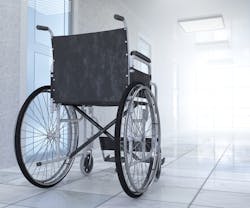By Vivek Garg, M.D., MBA, Chief Medical Officer of Humana’s Primary Care Organization
The pandemic exposed serious flaws in the U.S. healthcare system that existed long before Covid-19. Those problems include high levels of burnout and attrition among primary care physicians (PCPs) and the extreme vulnerability and poor health status of many older Americans.
The erosion of our primary care system has had an outsized effect on seniors. Primary care is the most impactful and under-resourced instrument we have to prevent disease, improve health and lower mortality rates. Yet, the U.S. spends only 5-7% of healthcare dollars on primary care. When it comes to seniors, our most vulnerable and chronically ill population, spending is even lower.
The repercussions of this underinvestment in primary care are hugely consequential. For patients it means poorer health and outcomes, especially for those of lower economic status, as was laid bare during the pandemic.
It has also made many primary care physicians’ jobs untenable, resulting in excessive patient caseloads and insufficient time and resources to focus on individual patient care and the myriad issues affecting their health. The result is that many PCPs are dissatisfied with their medical careers, while others are leaving the profession altogether. In fact, a diminishing number of medical students are choosing to pursue primary care in the first place. All this is happening as baby boomers are aging and the demand for primary care is growing.
There is a clear need for new models of care that reduce PCP caseloads and administrative work while addressing the complex health and social needs of older patients, particularly those living in underserved communities. The good news is, there are alternative approaches that are working. A value-based, care team approach, providing community-based senior-focused primary care is showing benefits for both clinicians and their patients.
Effective Health Care Requires More than Just Medical Care
To provide effective care, it’s essential to meet patients in the context of their daily lives – knowing the communities they live in and understanding and addressing the multiple factors impacting their health. A recent study by Humana published in the journal Health Affairs found that half of the Medicare Advantage plan members polled in a national survey reported having at least one health-related social need, and many reported multiple needs; one-third experienced financial strain, 18.5% had food insecurity and 17.7% had inadequate housing. A large number of seniors also lack access to transportation, preventing them from securing essential goods and necessary medical care, and increasing their isolation.
Ignoring these realities and attending only to a patient’s medical needs is not effective medicine. In fact, clinical care accounts for only 20% of health outcomes, while 80% are the result of social determinants of health (SDOH) – the socioeconomic and environmental factors affecting a patient’s well-being. Physicians are well aware of these non-medical influences on health. According to a Physicians Foundation survey, almost all physicians recognize the SDOH impact on patient outcomes. However, there is a large discrepancy between knowledge and practice, with only 16% of physicians screening for those factors.
The reasons behind this dichotomy are clear: physicians often lack the bandwidth and expertise to provide solutions to their patients and the fee-for-service model that is not intended to take into account all the factors that might affect a patient’s health.
But that is starting to change. Recent modifications to Medicare Advantage plans have expanded the definition of supplemental benefits to address a variety of social service needs; the push toward value-based care has also significantly elevated the role of SDOH in treating patients given the outsized impact they have on health outcomes.
The Difference a Care Team Can Make
Providing comprehensive, whole-person care requires a team of practitioners who can address the patient’s medical and social needs, along with a payment model that rewards them for the quality of care they provide, not for the quantity of services rendered.
It also requires a bond of trust between patient and provider that can only come when clinicians have enough time with a patient so that meaningful conversations can occur, revealing the daily and personal challenges their patients are up against. The average 15-minute appointment is not adequate for those relationships to develop. But the way most practices are currently run, physicians have more work than time. According to studies on time demands on physicians, primary care doctors need 18 hours a day to fulfill all their responsibilities, leaving scarce minutes for each patient visit.
Supported by a team of practitioners, including pharmacists, nurse care coaches, social workers and behavioral specialists, the physician not only has more time to spend with their patients, but the team can also address a full spectrum of patient needs that the physician alone cannot possibly do.
An example of this approach is Humana’s senior-focused primary care centers – CenterWell Senior Primary Care and Conviva Care Centers – which are mainly located in underserved communities. Using a value-based, care team model has substantially reduced physicians’ patient panels, enabling PCPs to spend an average of 40 minutes with a patient and increasing the frequency of their visits. These longer and more consistent encounters allow physicians and other care team specialists to better understand each patient’s life situation and provide the full range of care they need.
Connecting Seniors with Mental Health and Social Services
A key component to improving seniors’ overall health is attending to their psychological and emotional well-being. At least one in four older adults in the U.S. experiences a mental health disorder, with that number expected to double over the next decade. Poor mental health among seniors with chronic conditions can reduce adherence to treatment, exacerbate physical health conditions and lead to poorer quality of life and outcomes. It also results in considerable healthcare costs.
Despite the high prevalence of mental health disorders among this population, seniors are 40% less likely to seek or receive mental health treatment than younger individuals and as many as two-thirds of the elderly with mental health conditions do not get needed treatment.
The barriers to care are multiple and complex. However, when physicians have more time with patients, they are better able to identify potential mental health challenges and can provide easy access to mental health services when a behavioral health practitioner is an integral part of the primary care team, eliminating major obstacles to treatment.
Finding appropriate social services for patients requires time, labor and strong connections to the community in which the patient lives. Which is why it’s critical to have a social worker as part of the care team. They are best equipped to understand the specific social service needs of patients, build relationships with community-based resources and leverage those connections to address the daily life challenges that prevent people from achieving good health.
We’re already starting to see the clinical benefits of the value-based, care team model. A recent JAMA study found that primary care practices adopting this approach are reducing emergency department visits by over 13% and hospitalizations by almost 6%.
Reducing hospitalizations means more time that seniors can spend at home, doing things they want to do and staying connected with family and friends. As a physician, I believe we have done our jobs when we can help our patients enjoy a higher quality of life. In so doing, we can also help make primary care an attractive and enriching profession at a time when it is so desperately needed.


